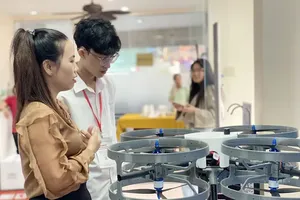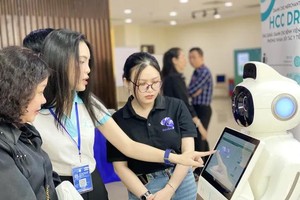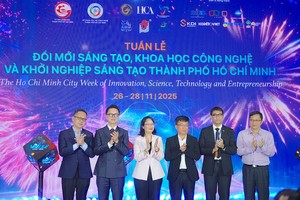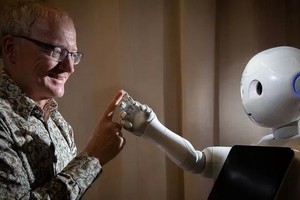
1. Crypto-anchor and Blockchain technologies will unite against counterfeiters
In the next 5 years, crypto-anchor technology, otherwise known as tamper-proof ‘digital fingerprint’, will be embedded in everyday commodities and devices. These digital fingerprints will be in various forms of tiny computers or optical codes.
Another example of this crypto-anchor technology is ‘edible ink’ to be embedded onto medicines. These codes can be used along with ‘distributed ledger’ technology of blockchain to guarantee an object’s authenticity from its point of origin to when it reaches the hands of its customer.
These technologies give way to new solutions that can tackle food safety, authenticity of manufactured components, genetically modified products, identification of counterfeit objects and provenance of luxury goods.
In the Think 2018 meeting, the biggest technology event of IBM happening in Las Vegas, IBM introduced the world’s smallest computer, at the size of a grain of salt. This special computer, which costs less than $0.1 to produce, will be used in logistics industry.
The computer employs crypto-anchor technology and has 1 million of transistors, along with a little RAM (Random Access Memory), a LED light, a photo-detector to transfer information, and a photo-voltaic cell for power.
According to IBM, the first official versions of crypto-anchor technology will be released in the next 18 months and launched into the market in the next 5 years.
2. Lattice Cryptography will protect users from hackers
IBM is developing new encryption methods to keep up with emergent technologies like quantum computers, which will one day break all existing encryption protocols.
Researchers from IBM have already developed a post-quantum encryption method named ‘Lattice Cryptography’, which will be submitted to the National Institute of Standards and Technology (NIST). No computer can crack it, not even future quantum computers.
With lattice cryptography, users can work on a file, or encrypt it, without ever worrying about exposing sensitive data to hackers.
Lattice cryptography technology is built on an underlying architecture to hide data inside complex math problems called lattices.
This new lattice technology is also the basis of another encryption technology known as Fully Homomorphic Encryption (FHE) to help perform calculations on a file without ever seeing sensitive data or exposing it to hackers.
3. AI-powered robot microscopes will save our oceans
In the next 5 years, AI-powered microscopes will continuously monitor water status, one of the Earth’s most essential and threatened resources.
These microscopes are very small and can be installed all over the world to work by itself to connect to cloud computing.
IBM researchers are working on a method to deploy plankton, which are natural, biological sensors of aquatic health, to know in detail different status of water.
AI-powered microscopes can be placed in water bodies to track the movement of those planktons in their natural environment, and then use this information to predict their behavior and health.
Since planktons form the foundation of the oceanic food chain, which serves as the primary source of protein for more than a billion people, the research and report on their behaviors will help in situations such as oil spills or water pollution from the ground, or even prediction threats like red tides.
4. AI bias will explode, but only the unbiased AI will survive.
In the next 5 years, we will possess solutions to fight against a surge in the number of biased AI systems and algorithms.
When building AI systems that can be trusted, it is vital to develop and train these systems with data that is fair, interpretable, and free of racial, gender, or ideological biases.
With this aim in mind, IBM researchers developed a way to reduce the bias that may exist in a training dataset so that any AI algorithm that later learns from that dataset will perpetuate as little inequity as possible.
IBM scientists also created a method to test AI systems even when the training data is not revealed.
5. Quantum computers will become the mainstream
Quantum computers are now under development and improvement. However, in the next 5 years, they will be extensively used by experts and developers in new fields to address problems that were once considered unsolvable.
Quantum computers will also be widely used in universities and, to some extent, in high schools.
IBM researchers have already achieved major quantum chemistry milestones. They successfully simulated atomic bonding in beryllium hydride (BeH2), the most complex molecule ever simulated by a quantum computer.
In the future, quantum computers will continue to solve problems with ever increasing complexity, and will eventually catch up to and surpass what can be traditionally done with classical machines.
Quantum computers are the next level of a super-powered computer system. In normal computers, data are saved in the form of 0 and 1. Yet a quantum computer uses qubit – quantum bit – to allow these computers to save data in many forms simultaneously (such as in all 0, all 1, or both 0 and 1). This will let quantum computers perform more complicated math problems.
























